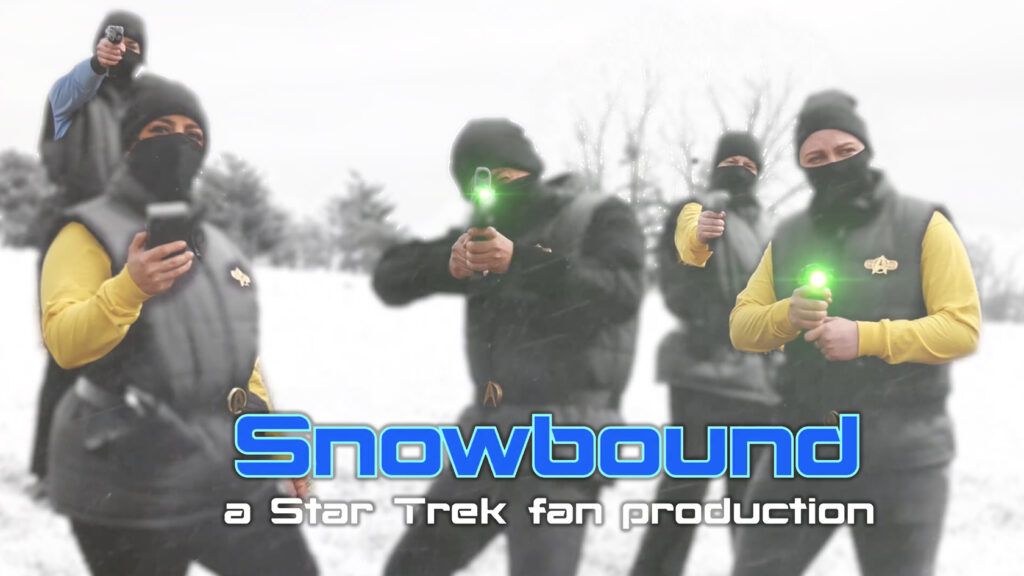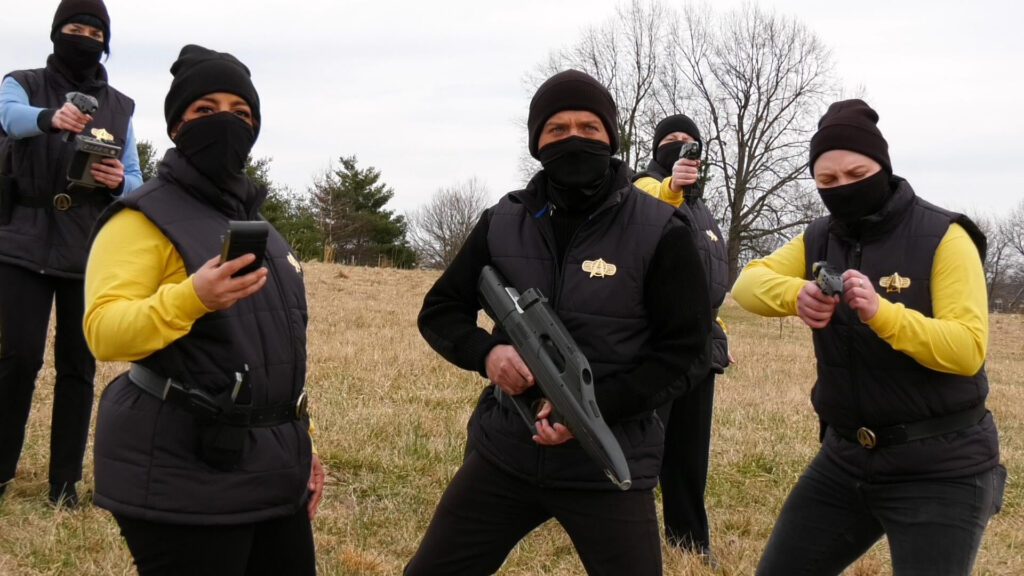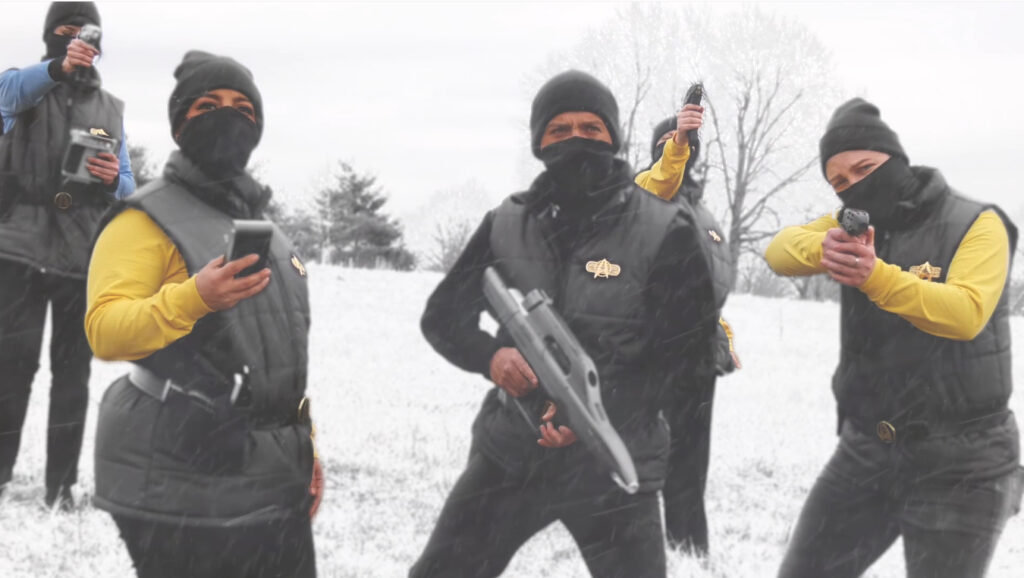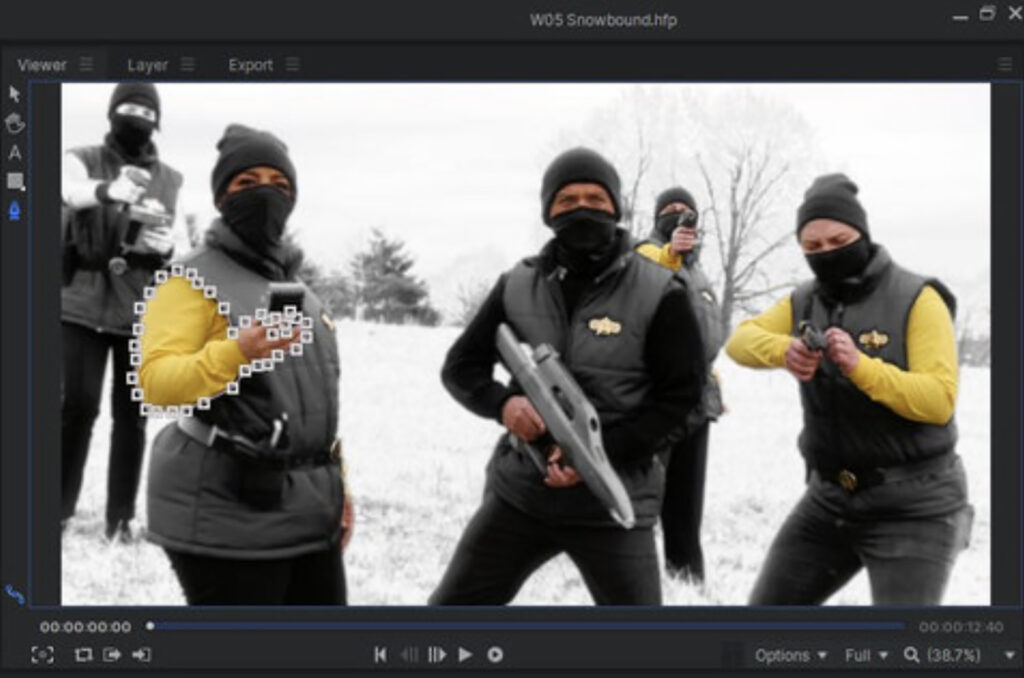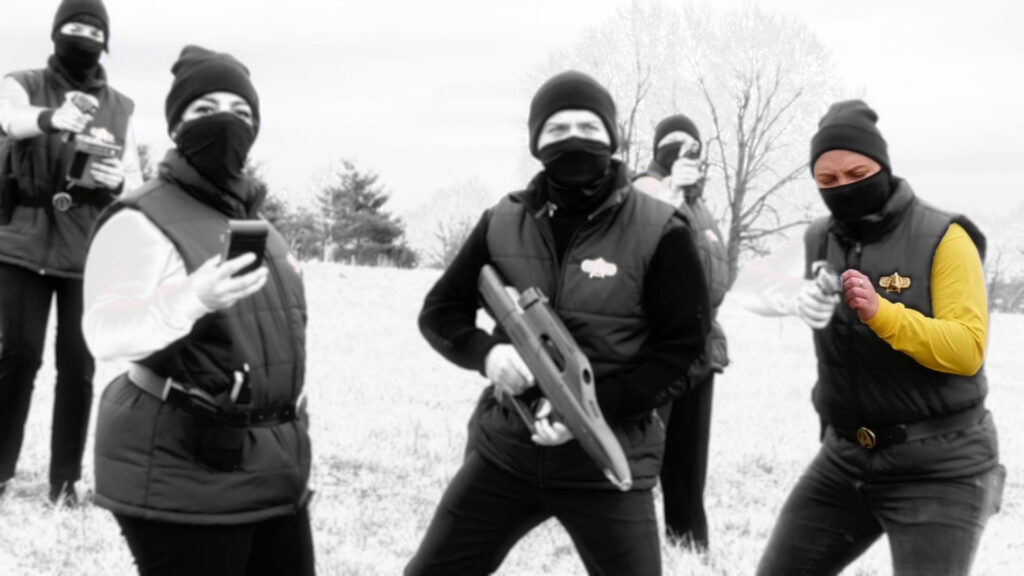I’m just kidding about you being nuts, Randy…well, kinda kidding!
If you look on the Internet (I’ve heard some people are doing that now), you’ll eventually run into a meme of DANNY DeVITO wearing a white wig pretending to be a pretentious art collector named Ongo Gablogian. It’s from an episode of the show It’s Always Sunny in Philadelphia, and the quote is:
Artists must suffer for the art. That’s why it’s called PAINting!
Well, if PAINting includes clicking multiple points with your mouse on literally tens of thousands of individual frames from a Star Trek fan film, then yes, RANDY LANDERS, showrunner of POTEMKIN PICTURES, has certainly suffered for his art. More precisely, he suffered for the most recent release from the STARSHIP WEBSTER Creative Group, “SNOWBOUND.” After filming, this fan film took an entire YEAR to finish!
Have a look…
Now, you might watch the above fan film and say, “So a bunch of Trekkies in Lexington, Kentucky went out on a day when it was snowing, shot some scenes, and turned it into a five-minute fan film (not counting opening and closing credits.) What’s the big deal?”
The big deal, my friends, is that it WASN’T snowing when Randy Landers shot it! Here’s what it looked like before Randy’s year-long odyssey of post-production began…
And here’s what it looked like after…
Of course, that’s just one still-frame. As I said, there’s nearly FIVE MINUTES of that!!!
So the obvious question this time out is: how on earth (or whatever planet that is) did Randy manage to accomplish this chilling feat? And since Fan Film Factor is mainly about fan filmmakers’ journeys getting from there to here, it’s time for another chat with Mr. Landers…
JONATHAN – Well, this was pretty impressive! Now, I could understand a fan production based Maine or Minnesota or Alaska or Finland(!) writing a script that takes place on a frozen planet. But, dude, you’re in frickin’ KENTUCKY!
RANDY – Actually, the original story was written by DAVID EVERSOLE, and if I recall correctly, it was about leaves covering the bodies. But when we moved from the Alabama to Kentucky, we had him change it to snow.
JONATHAN – Does Kentucky get a lot of snow? (The two times I’ve visited your state were both during the month of June.)
RANDY – Actually, it snows almost every other week here in Lexington during the colder months. It snowed on October 31, 2019 when we had just moved here, and it snows till around April 21st. This year, it snowed after Easter.
JONATHAN – I had no idea!
RANDY – So, yes, we wanted to film in the snow, but it was like 58 that day!
JONATHAN – But if it snows so often and/or regularly, why didn’t you just reschedule the actors for a different shooting day and try again?
RANDY – Originally I had really wanted to, but the weather here is totally unpredictable. And when you’re trying to get that many people in front of the camera, you can’t just call everyone on Friday night and say, “Okay, there’s snow on the ground, show up for a shoot tomorrow!” People have schedules, and you have to plan shoots weeks or often months in advance.
I’ve lived in North Georgia, South Georgia, and Central Alabama, and I’ve never seen weather so unpredictable as here. This past Friday night, for example, we had an 80% chance of thunderstorms during our outdoor location shoot. I looked out the window Friday evening and did not cancel. It was a beautiful day, and we filmed from 11-4 without any rain. One day, I remember, it went from 80 and sunny to 30 and sleeting. In 10 minutes. Weird.
In retrospect, I’m so glad we didn’t shoot in an actual snow storm. That would’ve been brutal for the cast. I went out several months ago to try to film some snow falling against a green screen. It’s COLD here! The cast and I would have been absolutely miserable even with the masks, which they wore to help protect everyone from COVID.
JONATHAN – Okay, so you were stuck with all this raw footage that you had to transform from a pretty day into a snow-covered planet. How did you do it?
RANDY – A page-long set of things, ranging from making a duplicate copy to paste on top of the original, then doing everything from changing brightness, glow, blur, and decolorizing. It was quite a daunting list, but doable. And thanks to a tutorial I found for HitFilm, we got the look I wanted…
JONATHAN – Wow! That is both awesomely cool and completely beyond my pay grade! But that tutorial seems to take the color out of everything. Your footage kept the landing party in color. How did you manage that?
RANDY – That was the hardest part! I had to mask off the characters’ left and right arms, their eyes and noses, their insignia pins, belt buckles, rank pins, tricorders, and the left and right hands of each character…for 24,000 frames!
It took slightly more than a year.
JONATHAN – When you say “masking off,” what does that mean precisely?
RANDY – You have to desaturate everything on the top layer, add the glow, the blur, etc. Underneath that layer, is another copy of the film. You then use the masking to subtract those effects from the arms, hands, faces, insignia, tricorders, etc. I literally had to place a point on the edge of each of the items listed above every few pixels apart. Each thing that had color had between 4 and 40 points to track through each frame. That were roughly 40 points for something like an arm, 8 points for something like the insignia.
In fact, you can count the mask points on Alyssa’s arm in the below screen cap. I think she’s got 36 or 37 mask points to move in each frame…
Some were a lot less. Some were a little more. I basically separated each mask so that if I screwed up one thing, I wouldn’t screw up all the other things.
JONATHAN – And you had to do this repeatedly for each frame of film, which is what, 30 frames per second?
RANDY – That episode was filmed at 50fps.
JONATHAN – I didn’t even know that was a thing!
RANDY – 50fps does exist; it’s the standard in Europe. The camera is a European model Panasonic made to shoot 24, 30, 50, and 60.
ROSS TROWBRIDGE does most of the space-based VFX, and he suggested that we change to 24 fps for future productions, and after the upcoming DEIMOS film, “PRIME DIRECTIVE,” we have done so.
JONATHAN – Why 24 fps and not 30?
RANDY – Apparently it gives a more cinematic look to the footage. We shot a Webster film last weekend in 24 fps, and it looks lovely. It also renders much faster. It took more than two hours to render “Snowbound.”
JONATHAN – So 50 fps x 60 is 3,000 frames per minute. There’s about 5 minutes of fan film not counting the credits. Isn’t that closer to 15,000 frames…which is still a lot!?
RANDY – The episode was originally 8 minutes, so I actually did quite a bit of extra masking work that wound up on the cutting room floor! I also ended up having to re-do the longest shot. 24,000 frames is a rough estimation, but it’s probably pretty close.
I estimate that I literally drew 120,000 masks, totaling 2.4 million points, over the year’s time.
JONATHAN – How long did each frame take you on average?
RANDY – 5 characters, 8 pieces to mask, I would take a week to finish a single 5-6 second shot. The longer the shot, the longer it took. And you can check. There are some long shots in that film. One shot took me three weeks just to mask.
The then there was the time to create an active blizzard with the snow I filmed, along with several others provided by other VFX friends, and even a low-level fog. Plus all the VFX work added a tremendous amount of render time as well. As I said, when assembled, it took the computer almost two hours to render the full film. I rendered every few weeks to prevent loss of my work, and they got longer and longer each time.
JONATHAN – So, yes, you are definitely nuts, Randy…but in a good way!
RANDY – I would accept that as an axiom. But I think the effect is pretty darn good, and accurate. I mean, if you look at this, you gotta say it looks pretty darn good.
JONATHAN – That it does! Absolutely. So you’d say all the countless hours were worth it?
RANDY – Well, it was to me. It’s a 7:05 min short science fiction story that really embodies Star Trek. This is the sort of story I want to tell. And yeah, well worth the effort.
JONATHAN – And as usual, my final question: what’s coming in the pipeline?
RANDY – Well, we just released FIREHAWK featuring JOSE CEPEDA and ROBERT LOPEZ from NATURE’S HUNGER.
We’ve got six films in post-production (we shot one last weekend, and I’m about to start editing), and two films in pre-production (one Deimos, one Webster). We should have all of them released by the end of the year.
JONATHAN – I guess that means we will both be busy!

